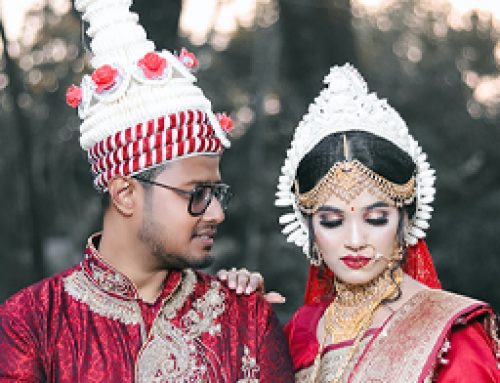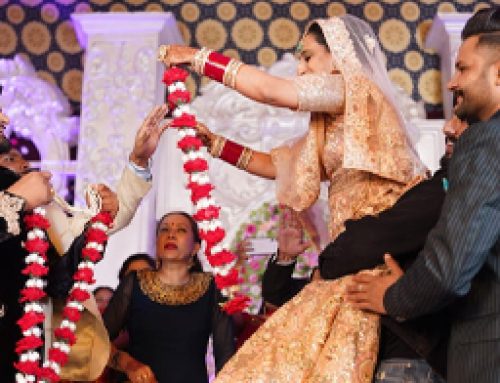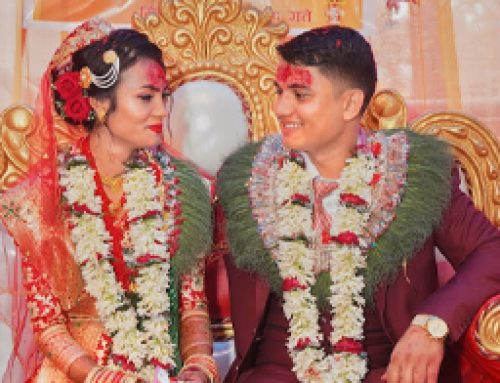Tamil Wedding Traditions
Tamil weddings, also known as Kalyanam or Thirumanam, are rich in cultural traditions and rituals that have been passed down through generations. Tamil weddings are known for their elaborate ceremonies, vibrant attire, and deep-rooted customs. Let’s explore some of the key traditions and rituals that are commonly observed in Tamil weddings:

Panda Kaal Muhurtham:
The Panda Kaal Muhurtham is a ritual that takes place a few days before the wedding. It involves the bride and groom separately performing prayers and seeking the blessings of their ancestors. The ceremony is held at their respective homes and is believed to bring good luck and divine blessings for the upcoming wedding.
Sumangali Prarthanai:
The Sumangali Prarthanai is a ritual where married women, known as Sumangalis, gather to offer prayers and blessings to the bride and groom. Sumangalis are considered to be a symbol of marital prosperity and happiness. They perform a sacred puja, tie sacred threads around the bride’s wrist, and offer traditional gifts. This ritual is believed to invoke the blessings of the divine and ensure a harmonious married life for the couple.
Nichayathartham:
The Nichayathartham ceremony is the formal engagement ceremony in Tamil weddings. It is a significant event where the families of the bride and groom exchange gifts, clothes, and other items as a token of acceptance and commitment. The bride and groom also exchange rings during this ceremony, symbolizing their engagement. It is usually a small, intimate gathering attended by close family members and friends.
Mappillai Azhaippu:
Mappillai Azhaippu, also known as the groom’s arrival, is a joyous occasion that marks the arrival of the groom and his family at the wedding venue. The bride’s family welcomes the groom with a traditional aarti and garlands him as a gesture of respect and honor. The groom is then escorted to the wedding mandapam (venue) amidst music, drum beats, and celebratory rituals.
Kasi Yatra:
The Kasi Yatra is a symbolic ritual where the groom pretends to renounce worldly pleasures and decides to embrace a life of spirituality. In this playful act, the bride’s brother or a family member intervenes and convinces the groom to return and accept the responsibilities of married life. It is a light-hearted moment that signifies the groom’s readiness for marriage.
Maalai Maatral:
The Maalai Maatral, or the exchange of garlands, is a significant ritual that symbolizes the acceptance and union of the bride and groom. They exchange beautifully adorned garlands three times, accompanied by chanting of sacred mantras and blessings from the priests. It signifies their willingness to be bound together in holy matrimony.
Oonjal:
The Oonjal ceremony is a traditional swing ceremony where the couple sits on a swing adorned with flowers. Relatives and friends take turns swinging them, signifying their support and encouragement in their marital journey. The couple is showered with rice and turmeric powder by married women, symbolizing fertility and prosperity.
Kanyadaan:
The Kanyadaan is a significant ritual where the bride’s father, or a male relative, gives away his daughter to the groom. It is a deeply emotional moment as the father entrusts the well-being and happiness of his daughter to the groom. The couple seeks the blessings of the elders and begins their journey as a married couple.
Mangalsutra and Saptapadi:
The groom ties the sacred Mangalsutra, a necklace with a pendant, around the bride’s neck during the Mangalsutra ceremony. It represents their marital bond and commitment to each other. The couple then takes seven sacred steps around the holy fire, known as the Saptapadi. With each step, they make promises to fulfill their responsibilities, respect each other, and lead a prosperous and harmonious life together.
Reception and Feast:
After the wedding ceremony, a grand reception is usually organized where family members, relatives, and friends come together to celebrate the union of the couple. A sumptuous feast, known as the Sadhya, is served, featuring a variety of traditional Tamil dishes. Music, dance performances, and cultural programs add to the festive ambiance of the reception.
Tamil weddings are a beautiful blend of customs, rituals, and joyous celebrations that reflect the cultural richness and deep-rooted traditions of the Tamil community. Each ritual holds its significance, symbolizing love, commitment, and the coming together of two families. These traditions create a memorable and auspicious atmosphere, making Tamil weddings a cherished and vibrant affair.
Indoor and Outdoor Venues To Plan Your Tamil Wedding in Melbourne
Seasons5 offers a vibrant atmosphere and Indian wedding venues along with dedicated staff to help you celebrate your Tamil wedding. Nestled in the lush greenery of Point Cook, Melbourne, we’ve got luxurious accommodations too. Our grand ballroom, gazebo, private lake, and outdoor venues make for a picturesque scene for wedding photos.
Crafted with local and fresh ingredients, our Cinnamon Bay Restaurant offers delicious meals for wedding celebrations. You can also enjoy our day spa to relax and rejuvenate. Feel free to call us on 03 8376 5300 or drop an email at contact@seasons5.com for more information.







